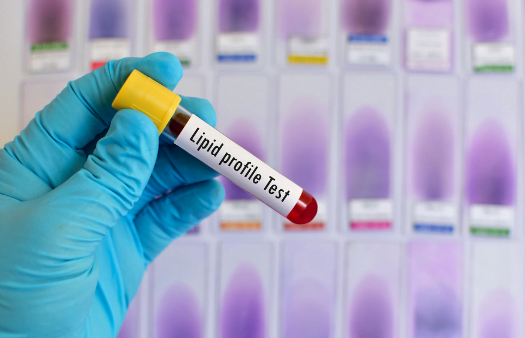Lipid Biomarker Testing in Rodent Toxicology Studies
The lipid biomarker testing service offered within the context of rodent toxicology studies is a crucial component for assessing the impact of xenobiotics and other environmental factors on cardiovascular health. This service involves the identification, quantification, and analysis of various lipids present in biological samples obtained from rodents, which can provide valuable insights into the pathophysiological mechanisms associated with toxicity.
Lipids play a vital role in cellular structure, energy storage, signal transduction, and metabolism. In rodent toxicology studies, lipid biomarker testing helps researchers understand how exposure to certain compounds affects key metabolic pathways involved in lipid homeostasis. Commonly measured lipids include cholesterol (both HDL and LDL), triglycerides, phospholipids, free fatty acids, and ceramides.
The methodology used for lipid biomarker testing typically involves a combination of extraction techniques followed by chromatographic separation methods like high-performance liquid chromatography (HPLC) or gas chromatography-mass spectrometry (GC-MS). These advanced analytical tools ensure precise quantification of target lipids, enabling accurate assessment of changes in their levels following exposure to test substances.
The significance of this service cannot be overstated when it comes to ensuring the safety and efficacy of new pharmaceuticals or chemical products before they reach clinical trials or market release. By comprehensively evaluating the effects on lipid metabolism, researchers can identify potential adverse reactions early on, thereby reducing risks for human subjects.
Moreover, compliance with regulatory standards such as those set forth by FDA, EPA, and OECD ensures that these tests contribute to reliable data generation which supports informed decision-making processes throughout product development cycles.
To summarize, lipid biomarker testing in rodent toxicology studies is an indispensable tool for uncovering the intricate relationships between environmental factors and cardiovascular health. It offers a robust platform for monitoring metabolic alterations induced by various agents, making it essential for ensuring both safety standards and regulatory compliance.
Why It Matters
The importance of lipid biomarker testing in rodent toxicology studies cannot be overstated given its profound implications across multiple disciplines including pharmaceuticals development, environmental science, and public health policy. Understanding how external factors affect lipid metabolism is critical not only for drug discovery but also for assessing the broader ecological impacts of industrial activities.
- Drug Discovery: Identifying novel therapeutic targets aimed at treating metabolic diseases such as diabetes or obesity.
- Environmental Impact Assessment: Evaluating the potential harm caused by pollutants on wildlife populations, especially those with significant overlap in dietary habits with humans.
- Predictive Toxicology Modeling: Providing accurate predictions about adverse effects based on early-stage screenings conducted during preclinical phases of drug candidates.
By providing precise measurements of lipids involved in these processes, this service facilitates more effective risk assessment and mitigation strategies, ultimately contributing to better overall health outcomes both among laboratory animals used for research purposes as well as humans exposed to similar environmental conditions.
International Acceptance and Recognition
Lipid biomarker testing in rodent toxicology studies is widely recognized globally due to its adherence to stringent international standards. This includes guidelines provided by organizations such as the International Organization for Standardization (ISO), European Committee for Standardization (CEN), American Society for Testing and Materials (ASTM), and others.
- ISO 17025: Ensures that laboratories conducting these tests operate under conditions meeting quality management system requirements, ensuring reliability of results.
- CEN/TS 16438: Provides technical specifications for the validation procedures applicable to lipidomics research involving rodents.
These standards ensure consistency and accuracy in testing protocols worldwide, facilitating cross-border collaboration between researchers from different countries. Compliance with these regulations also enhances credibility when submitting findings for regulatory approvals or peer review publications.
Use Cases and Application Examples
| Use Case | Description |
|---|---|
| Evaluation of Drug Safety Profiles | Assessing the cardiovascular safety profile of potential new drugs by measuring changes in lipid profiles after treatment. |
| Investigation into Environmental Pollution Effects | Detecting alterations in lipid metabolism caused by exposure to industrial pollutants, helping establish safe thresholds for public health. |
| Prediction of Toxicological Outcomes | Using historical data on lipid biomarker changes as indicators of toxicity for predicting potential adverse effects of novel compounds. |
- Screening New Chemical Entities: Monitoring the impact of newly synthesized chemicals during preclinical stages to ensure they do not disrupt normal lipid metabolism pathways.
- Epidemiological Studies: Examining correlations between environmental exposures and cardiovascular disease incidence rates using rodent models as surrogates for human populations.
The versatility of this service extends beyond simple detection; it plays a pivotal role in elucidating complex biological processes underpinning health issues. For instance, understanding the mechanisms behind lipid dysregulation could lead to breakthroughs in personalized medicine approaches targeting specific subpopulations vulnerable to certain types of cardiovascular diseases.





